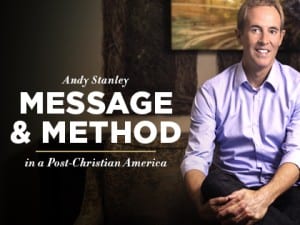5 Best Practices for Planting Disciple-Making Churches
By
• September 5, 2016

“Planting a church of disciples who make disciples isn’t only doable; it is what Jesus commanded his church to do.”
Recent Stories
1. They make disciple making the top priority.
When Exponential Director Todd Wilson was writing the book Becoming a Level 5 Multiplying Church, we talked about key factors behind what he calls Level 5 multiplication. Todd focused on these churches’ faith-filled leadership decisions. I focused on their discipleship practices. We agreed that such movements are also uniquely guided by the Holy Spirit and surmised that Level 5 churches come from 50 percent disciple-making practices, 25 percent leadership decisions and 25 percent a miraculous move of the Holy Spirit. I felt good about our conclusions until I met Ralph Moore.“I think disciple making is 90 percent of church multiplication,” he told me. Moore pioneered the Hope Chapel movement, the clearest example of a Level 5 multiplication movement in North America. Hope Chapel now has a legacy of more than 2,300 churches. Moore’s track record and reasoning are difficult to dispute.
Dann Spader of Sonlife Ministries and Global Youth Initiative is creating disciple-making movements in more than 90 countries. He describes leaders like Ralph Moore as “bleeders.”
“They are so committed to disciple making that if you cut them, they will bleed it,” Spader says. Discipleship author and speaker Bill Hull calls them “discipleship-first leaders.”
However you describe it, disciple making is these leaders’ top priority. They live it personally, talk about it regularly and lead their church to make it an everyday reality. These leaders multiply everyday disciples who then become disciple makers and multiplying leaders. Many naturally rise up to become church planters.
We see this kind of multiplication in the early church as Jesus invested in Peter, James and John. As leaders make disciple making their top priority, we have the same potential today.
2. They focus on everyday Christians.
Too many times, we think that multiplying disciples requires a special type of leader and congregation. These national ministry leaders continue to affirm that disciple-making churches start with everyday, ordinary people.Jim Putman decided to plant a church and then moved to Post Falls, Idaho. He was committed to planting a church around Jesus’ method of disciple making and hoped that God would eventually bless his church with 200 to 300 people. Today, some 6,000 people gather at Real Life Ministries in a metropolitan area of about 40,000 people. Putman then helped launch the Relational Discipleship Network of churches with leaders who follow Jesus’ method of disciple making—churches filled with everyday people who have developed a core commitment to be disciples and make disciples where they live.
Most of the 90-plus pastoral staff at the church came to faith and eventually progressed to join the staff from within the church. These leaders started out as non-Christians who visited a small group and eventually decided to be baptized (typically by their small-group leader). Soon, they began to lead a small group, followed by branching out to start a few new groups, then coaching small group leaders and finally developing into disciple-making leaders who were ready to join the leadership staff—now made up of former mill workers, former firemen and former business leaders.
Just like Jesus did with his fishermen-turned-followers, disciple-making leaders work to create cultures and support systems that equip and release people to be multipliers.
3. They keep it simple.
The only way to plant and grow a church filled with everyday Christians who are actively making disciples is to make it easy and reproducible.Before moving to the United States, disciple-making leader Alex Absalom was part of one of the fastest-growing and largest churches in England. Along with missional leader Mike Breen and others, he developed a very simple disciple-making method. Together, they created missional communities (service communities) of 20 to 50 people and then broke out those who were interested in going deeper into smaller groups of four to six people. The small groups became the engine of disciple making.
In those groups, leaders encouraged outside Bible reading and each time the group met, they focused on two questions:
1. What is the Holy Spirit telling you?
2. What are you doing about what the Holy Spirit is telling you?
That’s it. Boom! These groups began to multiply throughout the United Kingdom.
A few months ago, I asked Ralph Moore to make a presentation on how disciple making works in the Hope Chapel movement. He and Alex Absalom understand the importance and impact of simplicity:
“We invite people into relationships,” Moore explains. “Then we invite them to our church gathering on Sunday where we preach one chapter from the Bible each week.” From there, people are encouraged to get into a weekly small group that asks three questions:
1. What did the Holy Spirit tell you during the teaching Sunday,
2. What are you doing about it?
3. How can we help you by our prayers and support?
Hope Chapel small group leaders meet regularly with pastoral staff to work through leadership books and Scripture. In these leadership huddles, they ask the same three questions, applying those questions to their leadership readings.
That’s it. Simple. The heart of the Hope Chapel Movement.
4. They provide practical tools.
Not all disciple-making leaders make it as stunningly simple as Absalom and Moore. But they do understand that equipping everyday Christians with practical disciple-making tools is key to multiplication.Randy Pope is the founding pastor of Perimeter Church in Atlanta, Georgia, part of the Presbyterian Church of America. Theology, Bible study and doctrine are extremely important to the Atlanta church. So is church planting. Perimeter has planted 40 churches. Like all disciple-making churches, the church has a high number of people in discipling relationships outside of Sunday mornings. Perimeter leaders have cracked the code on making deeper theology both practical and learnable. They call their model Life on Life Missional Discipleship.
“Too many pastors talk about disciple making but fail their people because they do not give them practical, easily usable tools,” Pope says, adding that tools are essential because they transform disciple making from an abstract concept or theory into natural, simple practices anyone can follow.
5. They make “equipping Christians for ministry” the top responsibility of leadership staff.
Don’t miss this last practice. It is the foundation that supports the four practices above. These national leaders agree that two roles are essential to creating a disciple-making, multiplying church: 1) Pastoral leaders who function as equippers and 2) Church members who function as ministers of the church.Not only are disciple-making leaders committed to Jesus’ method, they also are committed to being equippers of everyday Christians. The primary job of church leaders is to equip, train and coach members to do the ministry of being disciples who make disciples.
Moreover, everyday church members must embrace their role. As the apostle Paul and Peter stress in their letters to the church, the people are the ministers, serving God in their unique gifts and ministries (Romans 12:38, 1 Peter 4:10-11).
When both roles are working together, a culture of multiplication begins to grow in which disciple-making leaders develop disciple makers who naturally develop disciples, who then grow to become disciple makers.
From these five best practices, we can develop a list of practical action points:
1. Become a leader who makes disciple making the top priority.
2. Focus on mobilizing everyday people.
3. Keep disciple making simple and reproducible.
4. Provide practical tools that make disciple making doable.
5. Ask all staff to focus on equipping members to be disciple-making ministers.
Planting a church of disciples who make disciples isn’t only doable; it is what Jesus commanded his church to do. When we make the multiplication of disciples our top priority, we lead and empower our present and future churches to find their place in Jesus’ mission and his ultimate plan for redeeming his people.
As founder of Discipleship.org, Bobby Harrington is bent on seeing churches become disciple makers. Join him and other disciple-making leaders at Exponential West in Los Angeles (Oct. 3-6) and at the National Disciple Making Forum in Nashville, Tennessee (Oct. 6-7). For more information, go to Exponential.org/events and Discipleship.org.



Tidak ada komentar:
Posting Komentar